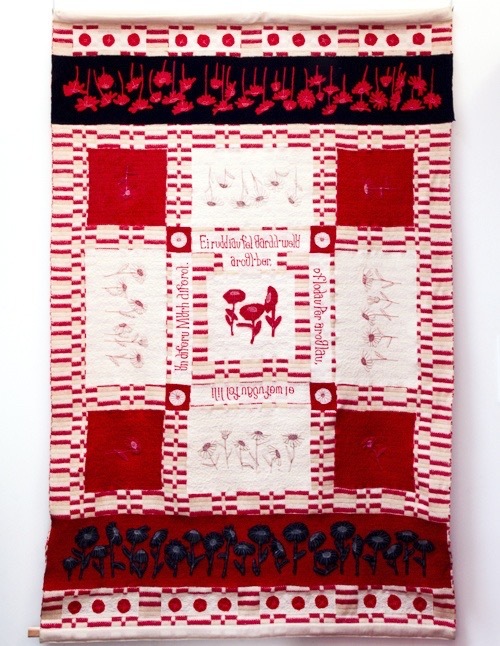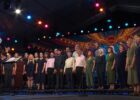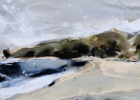"Binding experience, binding memories and binding tradition through thread and wool"
Plas Glyn-y-Weddw is proud of the opportunity to present a selection of Cefyn Burgess's work which spans different periods of his career.
Entitled 'Cwlwm Gwlân’, the exhibition draws from memory, combining history, culture and heritage through the medium of wool and yarn in the form of blankets, quilts, stitch and drawings.
The inspiration Cefyn received from early memories of his upbringing in a society where the chapel was a focal point is significant. This valuable experience from childhood days in Bethesda has had a considerable influence on him, resulting in culture and traditions that revolve around the home and the chapel forming a link throughout the work.
The experience of seeing chapels in his childhood community and further afield close, led to his interest in the chapels intensifying. It became a stimulus for him to travel to the far reaches of the world to experience how the Welsh who emigrated from their homeland over a hundred years ago, took their culture and traditions with them to America, especially Patagonia.
The legacy of this culture, traditions and heritage, whether at home in Wales or abroad, are constant themes in the work in the same way as a sense of belonging, longing and grief.
As well as taking their culture and heritage with them over the ocean, the Welsh also took with them objects that were so important to them, such as blankets and quilts. The chest with the picture of the ship S.S. Paris which sailed from Liverpool to the American continent on it is a symbol of the migration and the blankets that were transported in chests on the voyage.
Cefyn's studies which derive from his visits to the Americas, especially Patagonia, pay particular attention to the chapels that were built after arriving in the new territory and the difference in architecture compared to chapels at home is striking. In whatever country the buildings are located, they are iconic as well as being a symbol of a nation and its identity.
In the collection of work from Patagonia using ink and cotton printing, a glimpse of how 'Wales in the Dust' was created in Patagonia is captured. Three societies, three cultures, three languages and religions exist side by side.
Four large pieces of stitch and ink work from Patagonian chapels that break the long horizon and originate in the wide sky are very impressive and are displayed together in this exhibition for the first time.
For years now Cefyn has been collecting chapel crockery - the chapels have now closed and many have been demolished, but the crockery have survived.
This is a collection that awakens memories, evokes nostalgia and triggers discussions about the community and the people who made up the community - the way of life, the traditions and the chapels that were such an important part of the life of generations of Welsh communities. This is a culture that the future generations are not going to know about, a chunk of history that has disappeared, the crockery are an echo of it.
The stitch work that is displayed of chapel crockery from all over Wales is a selection from Cefyn's project to create a ‘catalouge on the wall’ of plates, cups and saucers, jugs and teapots that have been stamped with the names of the chapels.
The contemporary quilts that are part of the exhibition have been created from materials such as flannel, spun wool and cotton pocket cloths echoing history and tradition. In them we find colours and motifs, images and text that express elements such as love and home, the past and the present, hope, grief and safety.
Stories and personal significance are the background of the three quilts which represent life in the household.
A blanket, or cover, is the foundation of the 'Rhodd Cariad' quilt and the words from the Tales of Solomon in the form of a manuscript lettered on a separate flannel. The chamomile flowers were in front of him when he made the 'Serch’ quilt and as a result the work is completely organic.
'Cwilt Eluned' expresses grief. Eluned was his mother, and the flowers that have been stitched are flowers taken from his mother's grave following her funeral, and dried in the large family bible.
Please click here to view Cefyn Burgess' work





